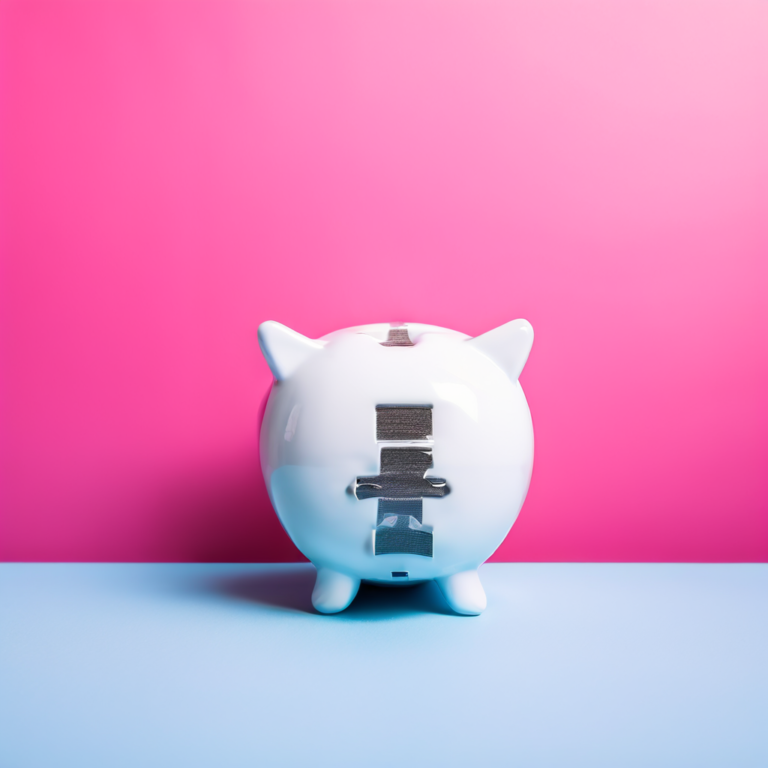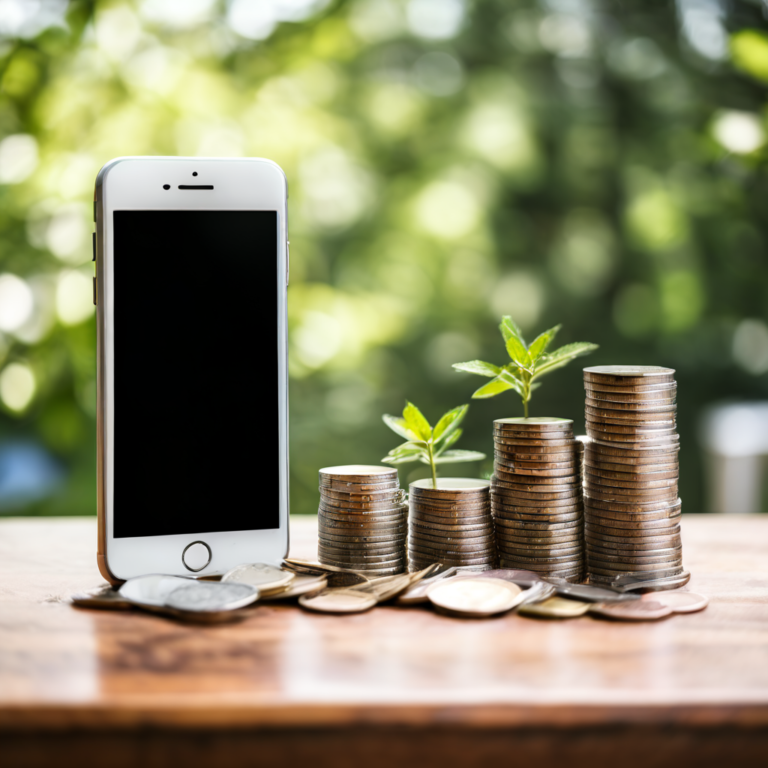10 Proven Strategies to Save Money on a Tight Budget
Introduction
Saving money can feel impossible when you’re living paycheck to paycheck, but even small changes can make a big difference. Whether you’re trying to cut costs, pay off debt, or build financial security, the right strategies can help you stretch every dollar. In this article, we’ll explore 10 proven ways to save money on a tight budget, helping you take control of your finances and work toward a more secure future.
Create and Stick to a Budget
Track Your Income and Expenses to Identify Areas for Savings
The first step in creating a budget is understanding where your money is going. Tracking your income and expenses allows you to identify spending patterns, uncover hidden costs, and pinpoint areas where you can cut back. Many people underestimate their discretionary spending—small daily purchases like coffee, dining out, or impulse buys can add up significantly over time. By categorizing your expenses, such as fixed costs (rent, utilities, insurance) and variable costs (groceries, entertainment, shopping), you gain a clearer picture of your financial habits.
Once you have a breakdown of your spending, it’s easier to determine which areas can be optimized. For example, if you’re spending a significant portion of your income on dining out, you may decide to cook at home more often. Similarly, reviewing your subscription services and canceling unused ones can free up extra funds each month. Keeping track of all financial transactions, whether manually in a spreadsheet or through an app, ensures that you remain aware of your spending habits and can make informed adjustments as needed.
Use the 50/30/20 Rule or Zero-Based Budgeting for Effective Money Management
Choosing a structured budgeting method can help ensure your financial stability. One of the most popular approaches is the 50/30/20 rule, which divides your after-tax income into three main categories:
- 50% for needs: Essentials like rent/mortgage, utilities, groceries, and insurance.
- 30% for wants: Non-essential expenses such as entertainment, travel, or dining out.
- 20% for savings and debt repayment: Building an emergency fund, investing, or paying off debt.
This method keeps your spending balanced while ensuring you prioritize savings and financial security.
Another effective method is zero-based budgeting (ZBB), which assigns every dollar a purpose. In this system, your total income minus your expenses should equal zero. This forces you to allocate funds deliberately, ensuring that each dollar is directed toward a specific need, saving goal, or investment. Zero-based budgeting can be especially useful for those who need strict financial discipline or are looking to maximize their savings potential.
Regardless of which method you choose, regularly reviewing and adjusting your budget ensures that it remains aligned with your financial goals and lifestyle changes.
Utilize Budgeting Apps to Stay on Top of Your Finances
Technology makes budgeting easier than ever. A variety of budgeting apps can automate tracking and help you stay accountable. Some of the most popular budgeting apps include:
- Mint: Automatically categorizes transactions, tracks bills, and provides spending insights.
- YNAB (You Need a Budget): Focuses on zero-based budgeting and encourages proactive financial planning.
- PocketGuard: Helps prevent overspending by showing how much you have available after covering bills and savings.
- GoodBudget: Uses the envelope budgeting method to allocate funds for specific categories.
These apps sync with your bank accounts, credit cards, and investments, providing real-time insights into your spending and saving habits. Many also offer alerts and notifications when you’re close to exceeding your budget in a particular category, helping you stay disciplined.
Using a budgeting app eliminates the hassle of manual tracking and ensures that your budget remains up to date. Additionally, these tools often include goal-setting features, which allow you to set and monitor progress toward saving for a house, vacation, or emergency fund.
Creating and sticking to a budget is one of the most effective ways to take control of your finances. By tracking expenses, using a structured budgeting method, and leveraging technology, you can build a sustainable financial plan that supports your long-term goals.
Cook at Home and Plan Your Meals
Eating Out Frequently Can Be Costly; Cooking at Home Saves Money
Dining out regularly can take a significant toll on your budget. Restaurant meals, takeout, and coffee shop visits may seem convenient, but their costs quickly add up. A single restaurant meal can be two to three times more expensive than a home-cooked dish, especially when factoring in taxes, tips, and delivery fees.
By choosing to cook at home, you can dramatically reduce food expenses while also gaining control over portion sizes and ingredients, leading to healthier eating habits. Cooking in bulk allows you to prepare multiple meals at a lower cost per serving, maximizing savings. Additionally, simple swaps—like brewing coffee at home instead of buying from a café—can lead to significant long-term savings.
A great way to track how much you’re spending on dining out is to review your bank statements. If you notice a pattern of excessive spending on restaurant meals, challenge yourself to cut back by preparing home-cooked alternatives. Even reducing takeout by just one or two meals per week can save hundreds of dollars per year.
Plan Weekly Meals to Avoid Food Waste and Stick to a Grocery List
Meal planning is one of the most effective strategies for saving money on groceries and reducing food waste. Without a plan, it’s easy to overspend on unnecessary items, buy duplicate ingredients, or let perishable foods go to waste.
To get started with meal planning:
- Choose a set day each week to plan meals based on what you already have in your fridge and pantry.
- Create a shopping list based on your planned meals to avoid impulse purchases.
- Incorporate versatile ingredients that can be used across multiple meals (e.g., rice, beans, vegetables, and proteins).
- Prepare meals in advance to save time during busy days, reducing the temptation to order takeout.
Sticking to a grocery list helps eliminate unnecessary spending and ensures that every ingredient purchased has a purpose. Additionally, planning your meals around store promotions or seasonal produce can further cut down food expenses while keeping meals fresh and varied.
Buy in Bulk and Use Coupons or Discount Apps to Lower Food Costs
Another great way to save money on groceries is by buying in bulk and using discounts strategically. Wholesale stores like Costco, Sam’s Club, or local bulk food markets offer significant savings on pantry staples, frozen foods, and household essentials. Bulk purchases are particularly useful for non-perishable items such as rice, pasta, canned goods, and spices, as well as meats that can be portioned and frozen for later use.
To maximize savings:
- Compare unit prices to ensure bulk purchases are genuinely cost-effective.
- Use coupons and digital discount apps like Ibotta, Rakuten, or Honey to find deals and cashback offers.
- Shop at discount grocery stores or look for store-brand alternatives, which often offer the same quality at a lower price.
- Take advantage of loyalty programs from grocery stores to earn points and receive exclusive discounts.
By cooking at home, planning meals wisely, and shopping strategically, you can significantly cut food-related expenses while maintaining a nutritious and satisfying diet. Making small changes in your food habits can lead to substantial long-term savings, allowing you to allocate more money toward your financial goals.
Cut Utility Bills
Lower Energy Costs by Unplugging Devices, Using LED Bulbs, and Adjusting Thermostat Settings
Reducing energy consumption is one of the easiest ways to lower your monthly utility bills. Many household appliances and electronic devices continue to draw power even when they are turned off—this is known as phantom energy or standby power. By simply unplugging devices when they are not in use or using a smart power strip, you can prevent unnecessary energy waste and reduce electricity costs.
Switching to LED light bulbs is another effective way to cut energy bills. Compared to traditional incandescent bulbs, LED bulbs use up to 75% less energy and last significantly longer, making them a cost-effective and energy-efficient choice. Although LEDs may have a higher upfront cost, their longevity and energy savings quickly offset the initial investment.
Adjusting your thermostat settings can also lead to significant savings. In the winter, lowering the thermostat by just one degree can reduce heating costs by up to 3%. In the summer, keeping the temperature slightly higher and using ceiling fans to circulate air can help lower cooling expenses. For added efficiency, consider installing a programmable or smart thermostat, which automatically adjusts the temperature based on your schedule, ensuring energy is not wasted when you’re not home.
Save on Water Bills by Fixing Leaks and Using Water-Efficient Appliances
Water bills can quickly add up, but small adjustments can lead to significant savings. A leaky faucet or running toilet may seem minor, but these issues can waste thousands of gallons of water each year. Fixing leaks promptly ensures you’re not paying for wasted water.
Upgrading to water-efficient appliances and fixtures, such as low-flow showerheads, faucet aerators, and dual-flush toilets, can drastically reduce water usage without compromising performance. Many modern dishwashers and washing machines are also designed to use less water and energy, leading to lower monthly bills.
Other ways to save on water costs include:
- Taking shorter showers instead of baths.
- Running full loads in the dishwasher and washing machine to maximize efficiency.
- Watering your lawn during the early morning or late evening to prevent evaporation.
- Collecting rainwater for outdoor use.

Look for Energy-Saving Programs or Rebates in Your Area
Many utility companies and government programs offer rebates, discounts, or tax incentives for making energy-efficient upgrades to your home. These programs can help offset the cost of solar panels, insulation, energy-efficient appliances, and smart thermostats. Some states or cities also offer free energy audits, which identify areas in your home where you can improve efficiency and save money.
To find energy-saving programs in your area:
- Check with your local utility provider—many companies offer rebates on LED bulbs, smart thermostats, and energy-efficient appliances.
- Visit government energy websites to see if you qualify for tax credits or incentive programs.
- Explore community programs that provide weatherization assistance, especially for low-income households.
By making small adjustments in your home and taking advantage of available incentives, you can significantly reduce your utility bills. Cutting energy and water costs not only saves money but also contributes to a more eco-friendly and sustainable lifestyle.
Shop Smart and Buy Second-Hand
Take Advantage of Sales, Cashback Apps, and Discount Codes
One of the easiest ways to save money while shopping is by being strategic with discounts, sales, and cashback offers. Retailers frequently run seasonal sales, holiday promotions, and clearance events, allowing savvy shoppers to score significant discounts. Planning major purchases around these sales can help you save hundreds of dollars annually.
To maximize savings, consider these strategies:
- Use cashback apps like Rakuten, Ibotta, or Honey, which offer rewards for shopping at partnered retailers. Some apps even provide additional discounts or price tracking features.
- Sign up for store loyalty programs to earn points and receive exclusive discounts. Many retailers offer a welcome bonus or first-time purchase discounts when you subscribe.
- Stack coupons with ongoing sales for even greater savings. Websites like RetailMeNot and Coupons.com provide discount codes for both online and in-store purchases.
- Wait for major sales events such as Black Friday, Cyber Monday, and back-to-school promotions to buy big-ticket items at reduced prices.
By planning your purchases and leveraging cashback rewards, you can cut costs significantly without compromising on quality.
Buy Second-Hand Items for Clothes, Furniture, and Electronics
Purchasing second-hand goods is an excellent way to save money while reducing waste. Many high-quality items, including clothing, furniture, and electronics, can be found in near-perfect condition for a fraction of the retail price.
Where to shop for second-hand deals:
- Thrift stores and consignment shops—great for gently used clothing, accessories, and home décor.
- Online marketplaces like Facebook Marketplace, Craigslist, and OfferUp—ideal for furniture, appliances, and electronics.
- Refurbished electronics retailers such as Apple Certified Refurbished, Best Buy Outlet, or Amazon Renewed—provide discounted, tested, and warrantied electronics at a lower cost.
- Garage sales and estate sales—excellent sources for vintage and second-hand household goods.
Buying second-hand not only helps your budget but also promotes sustainable consumption by giving products a second life instead of contributing to landfill waste.
Compare Prices Before Making Major Purchases
Impulse buying can lead to overspending, especially on big-ticket items. To ensure you’re getting the best deal, always compare prices across multiple retailers before making a major purchase.
How to compare prices effectively:
- Use price comparison websites like Google Shopping, CamelCamelCamel (for Amazon price tracking), or PriceGrabber to find the lowest price.
- Check multiple retailers, both online and in-store, as prices can vary based on location and availability.
- Look for price-match guarantees—some stores will match or even beat a competitor’s lower price.
- Consider open-box or clearance deals, which often offer brand-new items at discounted rates simply because the packaging was damaged.
By taking a few extra minutes to research and compare prices, you can avoid overpaying and make informed purchasing decisions.
Shopping smart and incorporating second-hand purchases into your routine can lead to substantial financial savings over time. By using discount tools, buying pre-owned goods, and comparing prices before making big purchases, you can maintain a high-quality lifestyle on a budget.
FAQs
Q: What is the best way to start saving money on a tight budget?
A: Start by tracking your expenses and creating a realistic budget to see where you can cut back.
Q: How can I reduce my monthly expenses without sacrificing too much?
A: Cancel unused subscriptions, cook at home instead of eating out, and look for discounts or cashback offers when shopping.
Q: Is it possible to save money even with a low income?
A: Yes, by setting small savings goals, using cashback apps, and prioritizing needs over wants, you can still save money over time.
Q: What are some easy ways to cut utility bills?
A: Turn off lights when not in use, unplug electronics, use energy-efficient appliances, and adjust your thermostat to save on heating and cooling.
Q: How can I enjoy entertainment without spending much?
A: Take advantage of free events, use the library for books and movies, and explore outdoor activities like hiking or biking.
Q: What is a good strategy to save money while shopping?
A: Buy secondhand items, use coupons, compare prices before purchasing, and stick to a shopping list to avoid impulse buys.
Conclusion
Living on a tight budget doesn’t mean you can’t save money—it just requires smart planning and discipline. By tracking expenses, cutting unnecessary costs, and making intentional financial choices, you can create a more stable and secure future. Start small, stay consistent, and remember that every dollar saved brings you closer to financial freedom.





